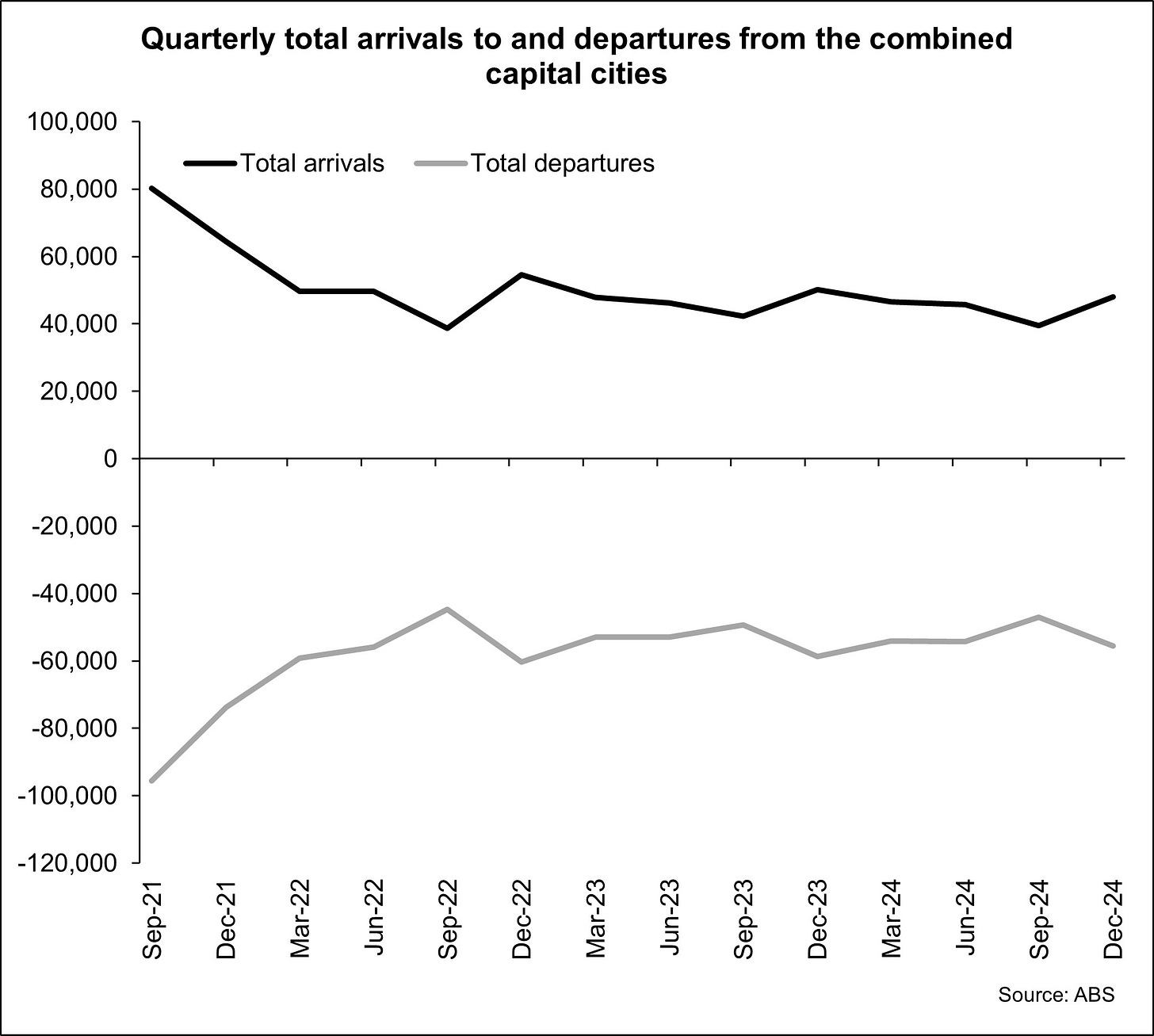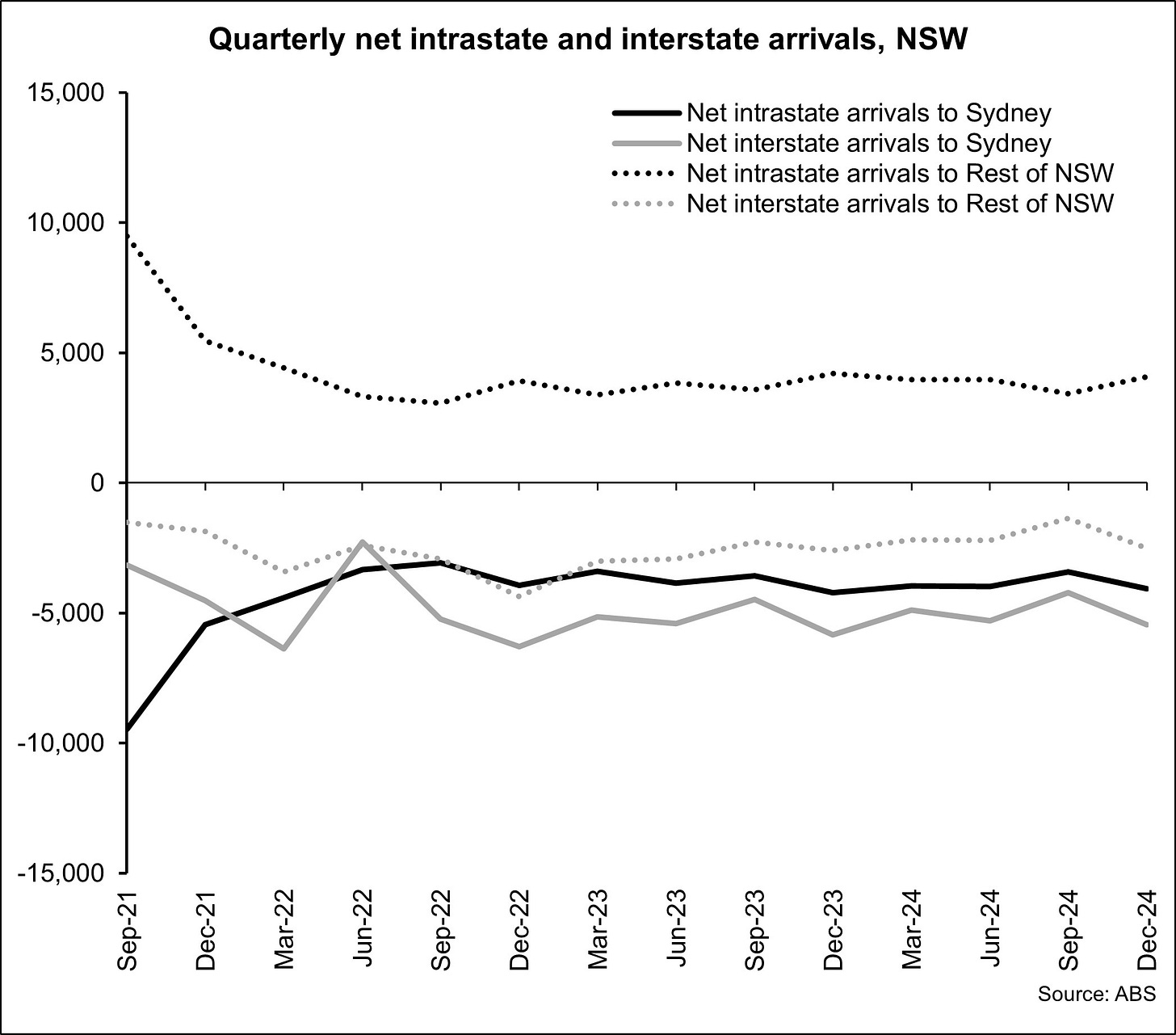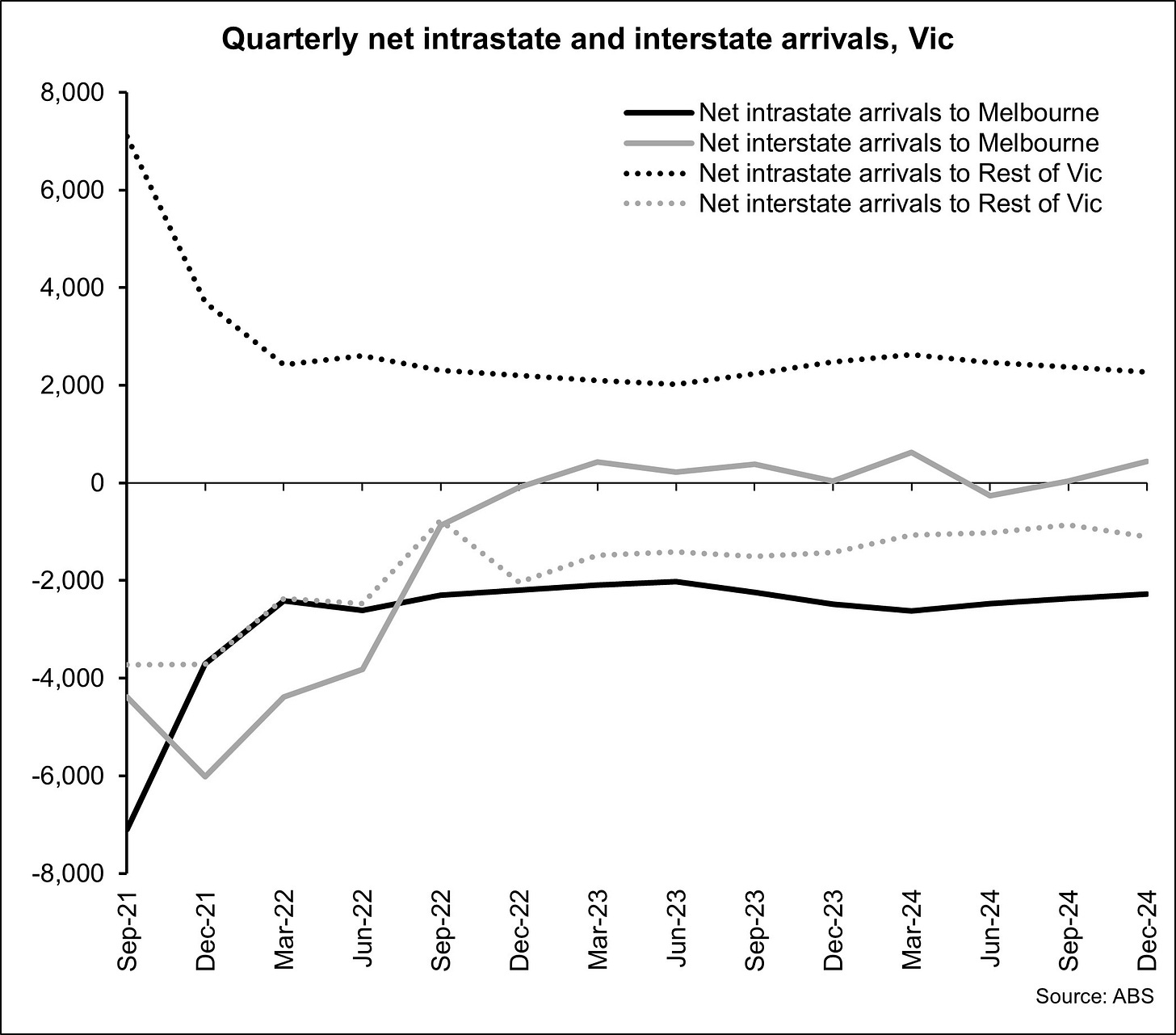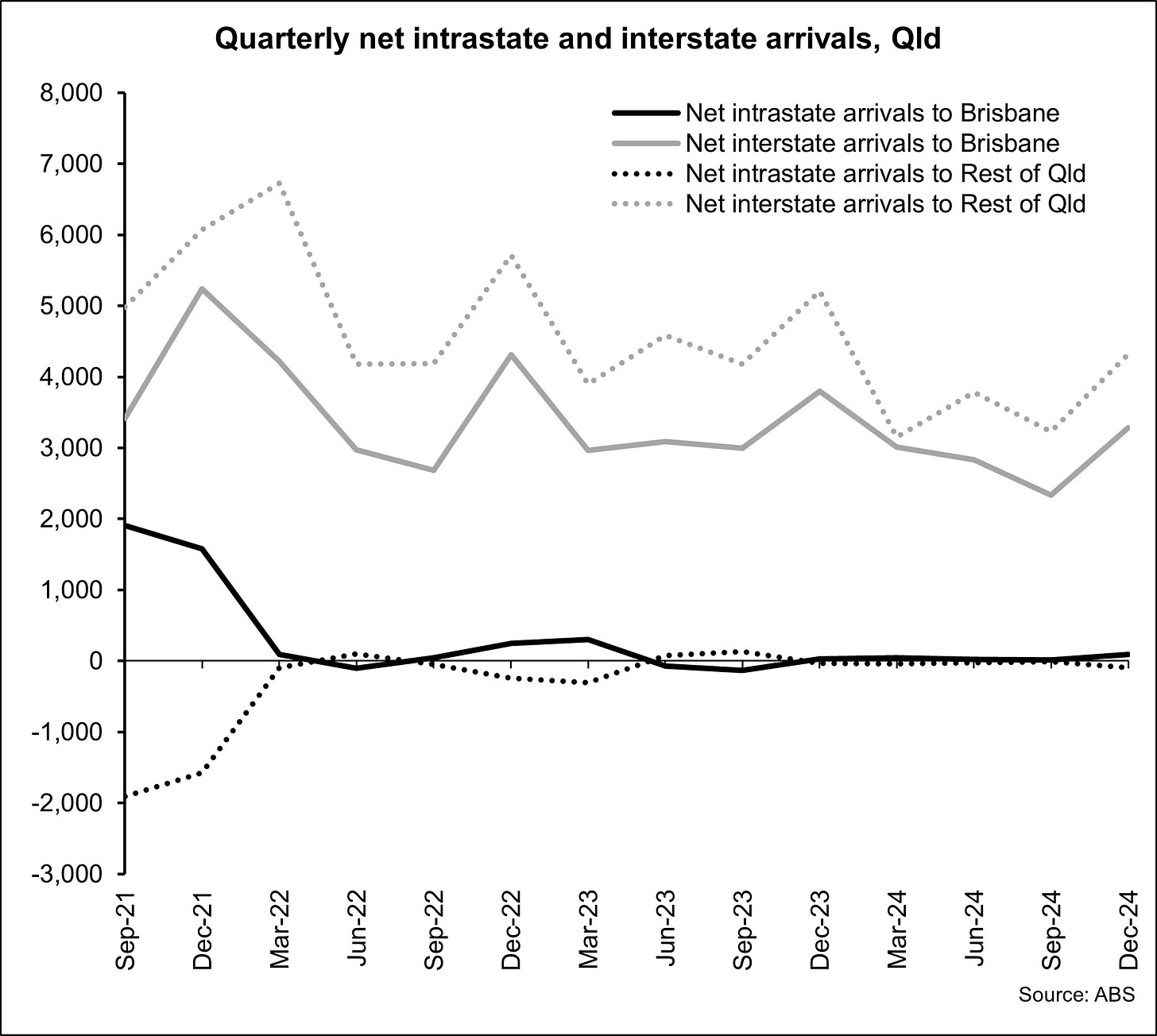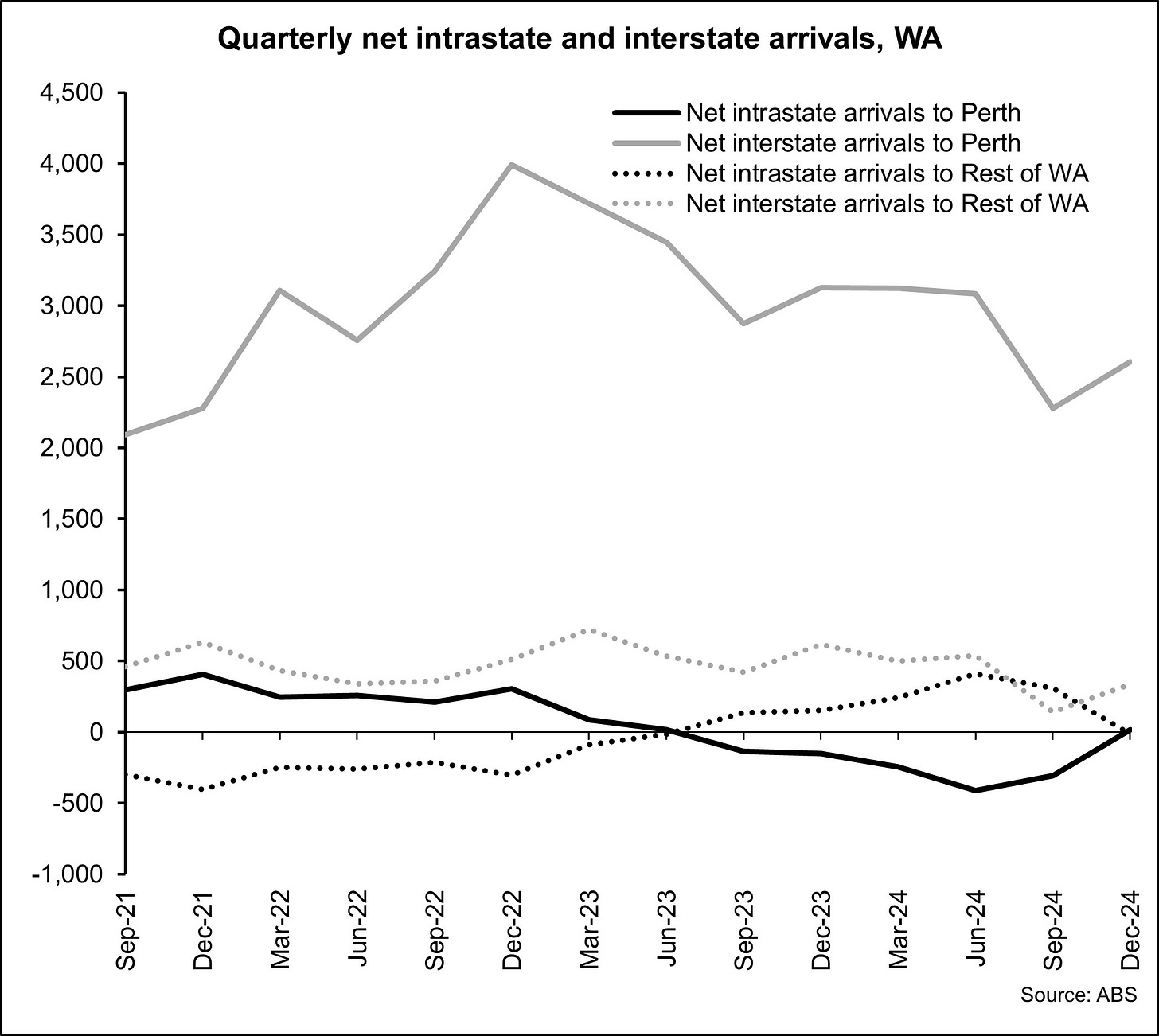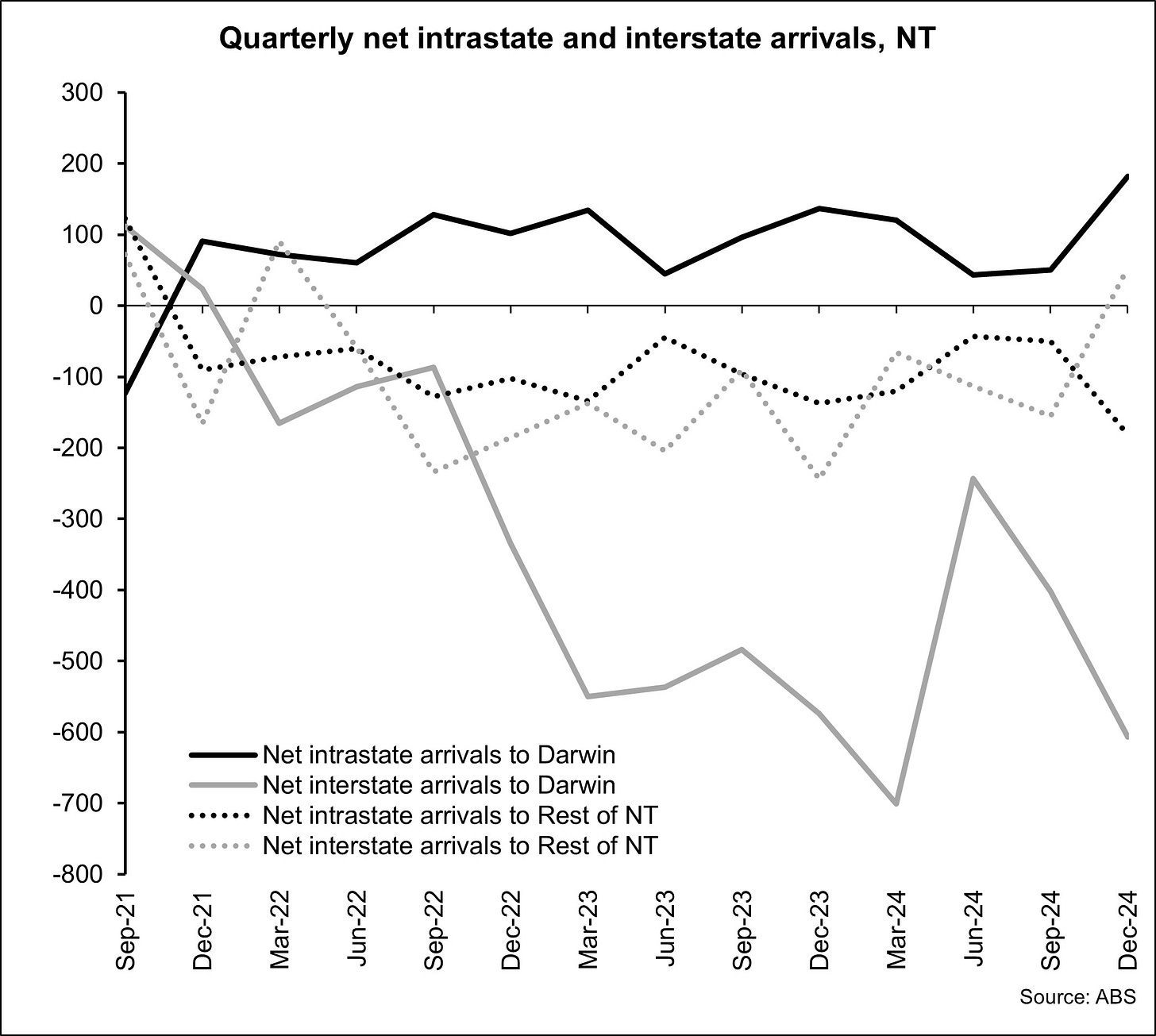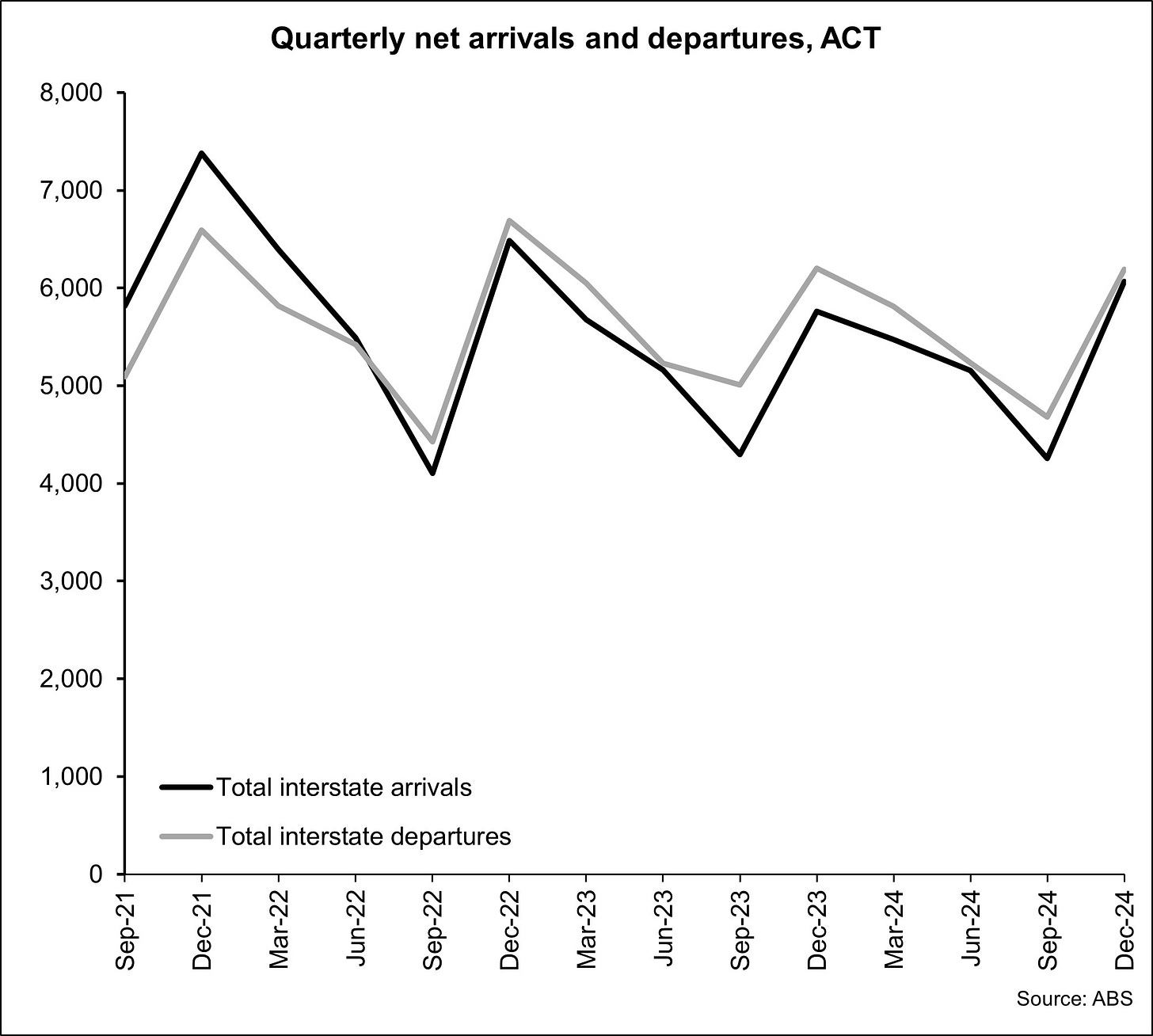How have residents moved between the capital cities and rest of state areas over recent years
Despite the impact of the pandemic fading, there is still more internal migration occurring to regional markets than to capital cities.
Over the December 2024 quarter, there was 48,093 individuals arriving into the capital cities from regional markets while 55,618 capital city residents left to move to a regional area of the country.
Between September 2021 and December 2024, net arrivals to regional areas from the capital cities peaked in September 2021 at 15,318 persons. The 7,525 net arrivals in regional markets in the December 2024 quarter was the fewest since September 2023 but the volume of movements remains elevated.
The data indicates that a higher proportion of internal migration movements are continuing to shift to regional markets rather than to capital cities. This is likely being driven by desire for lifestyle change, cheaper housing (although that isn’t always the case) and greater workplace flexibility allowing people to make the shift.
Let’s look at the data across each state and territory.
New South Wales
Over the December 2024 quarter, Sydney saw a net 4,070 residents leave to areas of NSW outside of the capital city which was the largest movement since the December 2023 quarter and the second largest movement since the March 2022 quarter.
Both Sydney and Rest of NSW are shedding residents to other states and territories with net losses of 5,449 persons over the December 2024 quarter for Sydney and a net loss of 2,517 residents for Rest of NSW.
Overall, net internal migration resulted in a loss of 9,519 residents for Sydney over the quarter and a gain of 1,553 residents for Rest of NSW.
Victoria
Melbourne saw a net 2,272 residents shift out of the city and into regional areas of Victoria over the final quarter of 2024 which was the smallest outflow since the September 2023 quarter.
Over the quarter, Melbourne recorded a net gain of residents from interstate of 444 persons, the largest increase since March 2024 while Rest of Vic recorded a net loss of 1,099 residents to interstate, its largest quarterly outflow in 12 months.
Net internal migration over the final quarter of 2024 resulted in a loss of 1,828 residents from Melbourne, the smallest loss since the June 2023 quarter, while Rest of Vic gained 1,173 residents over the quarter, the smallest gain since the December 2023 quarter.
Queensland
Net intrastate migration over the December 2024 quarter saw Brisbane gain 94 residents from the rest of the state and this was the largest quarterly gain since March 2023.
Brisbane recorded quarterly net interstate migration of 3,285 persons in the December 2024 quarter, the largest gain in four quarters while Rest of Qld gained 4,317 residents from interstate, its largest gain in four quarters.
Over the final quarter of 2024, net internal migration led to an increase in residents for Brisbane of 3,379 persons, the largest increase since the December 2023 quarter while Rest of Qld gained 4,223 residents which was also its largest gain since December 2023.
South Australia
Over the December 2024 quarter, net intrastate migration in SA saw 292 residents leave Adelaide for regional SA. This was the smallest net movement between the capital city and rest of state since the September 2023 quarter.
Quarterly net interstate migration resulted in the loss of 588 residents from Adelaide, the largest outflow since the March 2024 quarter. In Rest of SA, net interstate migration led to a gain of 110 residents, the smallest increase since the September 2023 quarter.
Net internal migration over the December 2024 quarter led to a decline in Adelaide’s population on 880 residents and it led to an increase in Rest of SA residents of 402 persons, the smallest increase since the September 2023 quarter.
Western Australia
Net intrastate migration into Perth over the final quarter of 2024 resulted in an increase of 15 residents and thus resulted in a net loss from regional WA of 15 residents. This was the first quarterly gain in residents for Perth from net intrastate migration since the June 2023 quarter.
Quarterly net interstate arrivals to Perth were recorded at 2,606 persons over the December 2024 quarter while Rest of WA saw net interstate arrivals of 337 residents. Both Perth and Rest of WA recorded an increase in net interstate arrivals over the quarter.
Over the December 2024 quarter, net internal arrivals to Perth were recorded at 2,821 persons, the highest volume since the March 2024 quarter. Net internal arrivals to Rest of WA were recorded at 322 persons which was the lowest number since the December 2022 quarter.
Tasmania
Over the December 2024 quarter, net intrastate migration from Rest of Tas to Hobart was recorded at 38 persons. This represented a slight reduction in the number of moving to the capital from outside of it compared to the previous quarter.
Hobart recorded a net outflow of residents to other states and territories over the quarter of 784 persons which was the largest outflow in four quarters. On the other hand, net interstate migration to Rest of Tas over the quarter saw a gain of 19 residents which was down from a gain of 119 residents over the previous quarter.
Net internal migration to Hobart over the final quarter of 2024 resulted in a loss of 746 residents which was the largest outflow since the December 2023 quarter. Rest of Tas recorded a loss of 19 residents net internal migration over the final quarter of 2024.
Northern Territory
Darwin recorded net intrastate migration of 182 persons over the December 2024 quarter, which was a direct outflow from Rest of NT. The net intrastate migration of 182 persons was the strongest quarterly flow to Darwin any quarter since September 2021.
Quarterly net interstate migration saw 607 residents of Darwin shift interstate while Rest of NT gained 53 residents from other states and territories. The 607 resident loss for Darwin was the greatest loss since March 2024 while the 53 resident gain outside of the capital city was the largest, and the first gain since March 2022.
Total net internal movements over the December 2024 quarter resulted in a 425 person decline in Darwin’s population, the largest fall since March 2024. Net internal movements saw Rest of NT’s population fall by 129 persons over the quarter, the smallest decline since June 2022.
Australian Capital Territory
With no rest of state region, the ACT has 6,064 interstate arrivals over the quarter and 6,191 departures resulting in a net loss of 127 residents down from a loss of 427 residents the previous quarter.
What does the data tell us?
Regional Australia remains popular for people that are already in the country looking to move whilst we know that most overseas migrants will initially settle in the capital cities.
Each of the regional markets in NSW, Vic, Qld, SA and WA have seen positive net internal migration over the quarter. In NSW and Vic the positive population growth in regional areas has been entirely driven by those people leaving the capital city. In Qld and WA the increase in regional populations over the quarter has been entirely due to interstate movements while in SA it has been a combination of both intrastate and interstate movements.
Amongst the capital cities, Brisbane and Perth were the only capitals in which net internal migration was positive over the quarter with most of the increase (but not all) driven by interstate movements. In Melbourne net interstate movements have been positive but more people have left the city while in Hobart and Darwin net intrastate migration has been positive but more residents have left for interstate. In Sydney and Adelaide both net intrastate and net interstate movements were negative over the quarter.
Overall, Qld and WA are the most popular states for people to move to and in Qld in more of those people that are moving to the state are settling outside of Brisbane. The data also highlights that in all states and in particular in the capital cities, net overseas migration is the primary driver of population growth rather than internal movements of residents.




